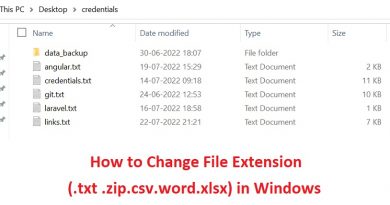REST APIs with example
How to Send a REST API Request?
When sending a request to a REST API endpoint, include JSON data in the request body and specify the data type using the Content-Type: application/json header. To ensure the server returns data in JSON format, add the Accept: application/json header. In response, the server confirms the data type using the Content-Type: application/json header.
For instance, when sending JSON data to the Blogshub echo URL with the Accept: application/json header, the server responds in kind. Try sending a REST API request online to observe how this works in real-time.
What is a REST API?
A REST API (Representational State Transfer Application Programming Interface) is a popular interface designed to enable seamless communication between software components. Introduced in 2000 by Roy Fielding, REST APIs adhere to specific principles that provide developers with flexibility and ease of use.
This architectural style supports HTTP methods to perform CRUD operations (Create, Read, Update, Delete).
- GET: Fetches data or a document.
- POST: Creates a new record.
- PUT: Updates existing data.
- DELETE: Removes a resource.
The simplicity, scalability, and compatibility of REST APIs make them ideal for microservices architecture, where applications need to interact efficiently.
Understanding APIs
An API (Application Programming Interface) acts as a bridge enabling communication between two software applications. APIs define rules and protocols for interaction, making them essential for building and integrating applications.
Modern APIs, particularly those that follow REST principles, are user-friendly and standards-compliant (e.g., HTTP-based). Like any software, APIs undergo a development lifecycle, including design, testing, deployment, and versioning. Comprehensive documentation ensures developers can use them effectively and track updates.
What is REST?
REST (Representational State Transfer) is an architectural style that standardizes interactions between systems on the web. REST promotes:
- Statelessness: Each client-server request is independent, containing all necessary information.
- Cacheability: Reduces data exchange by allowing responses to be cached.
- Client-Server Separation: Ensures clear distinctions between client-side and server-side responsibilities.
- Layered System: Supports multiple layers for security and load balancing.
RESTful systems are widely adopted due to their simplicity, flexibility, and scalability.
Criteria for a RESTful API
For an API to be considered RESTful, it must meet these requirements:
- Client-Server Model: Clearly separates clients, servers, and resources, using HTTP for communication.
- Stateless Architecture: Each request is treated independently without storing client information between calls.
- Caching: Supports caching to optimize data exchange.
- Layered Design: Allows intermediary servers for security and performance optimization.
How to Send REST API Requests?
To interact with a REST API server:
- Include JSON data in the HTTP request body.
- Add the Content-Type: application/json header to indicate the format.
- If expecting JSON responses, send the Accept: application/json header.
Example Request:
POST /endpoint HTTP/1.1
Host: example.com
Content-Type: application/json
Accept: application/json
{
"key": "value"
}Example REST API Response
Here’s an example of a REST API server response:
HTTP/1.1 200 OK
Content-Type: application/json
Content-Length: 19
{
"status": "success"
}- Content-Type: application/json: Confirms the response is in JSON format.
- Content-Length: 19: Specifies the size of the JSON data returned.
Why REST APIs are Essential
REST APIs are the backbone of modern web and mobile applications, powering everything from social media platforms to e-commerce websites. Their stateless, scalable, and standardized approach makes them a go-to choice for developers aiming to build robust, interconnected systems.
Keep Learning 🙂

